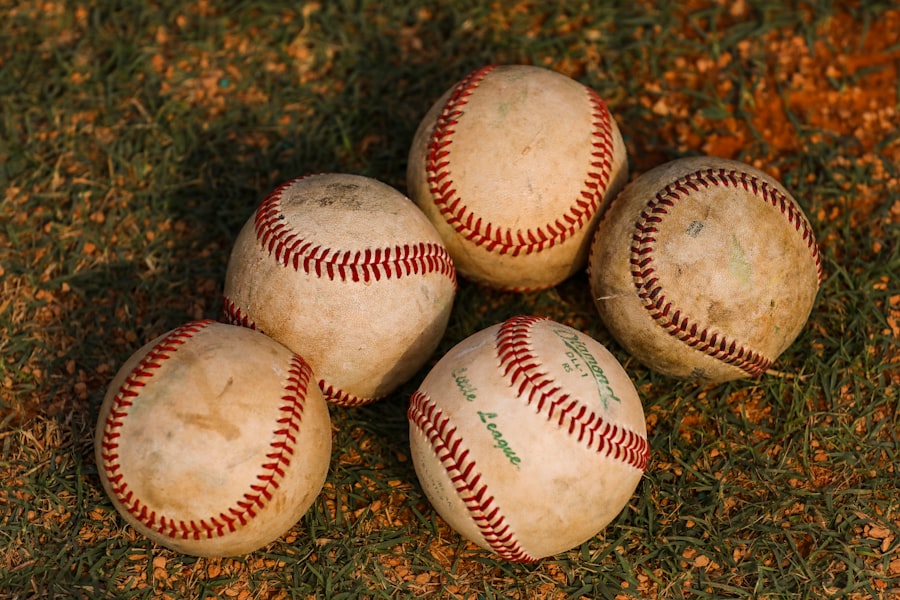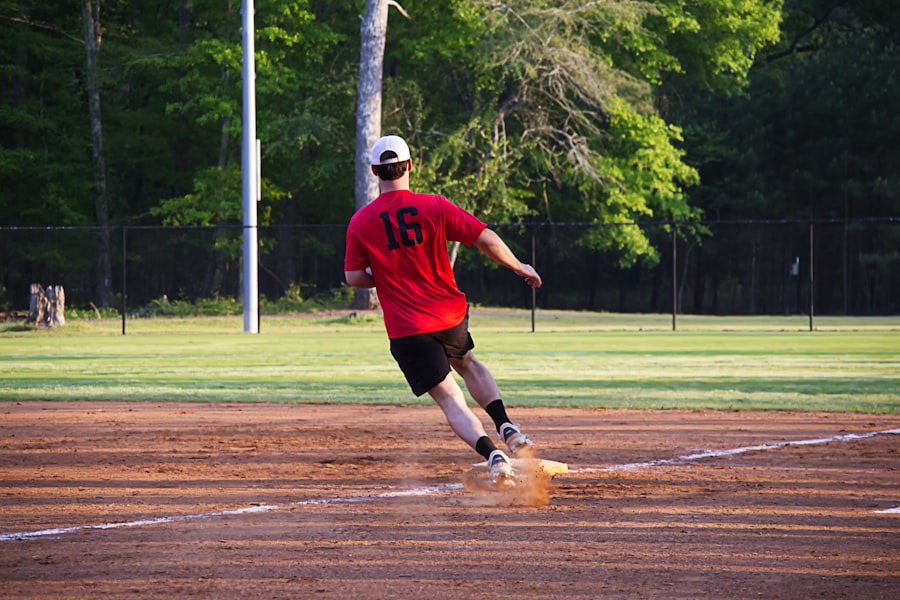Download links
How to install Mastering the Art of Softball: Tips for Success APK?
1. Tap the downloaded Mastering the Art of Softball: Tips for Success APK file.
2. Touch install.
3. Follow the steps on the screen.
Description
Softball is a dynamic and engaging sport that has captivated players and fans alike since its inception in the late 19th century. It is played on a diamond-shaped field, similar to baseball, but with some key differences that set it apart. The game typically features two teams of nine players each, who take turns batting and fielding.
The objective is to score runs by hitting a pitched ball and successfully reaching a series of bases arranged in a diamond shape. The game can be played in various formats, including fast-pitch and slow-pitch, each with its own set of rules and playing styles. The fundamental rules of softball are relatively straightforward, making it accessible to players of all ages and skill levels.
An out can occur in several ways, such as striking out, being tagged out while running the bases, or hitting a fly ball that is caught by a fielder. The team with the most runs at the end of the game is declared the winner.
Understanding these basic rules is essential for anyone looking to participate in or follow the sport, as they form the foundation upon which more advanced strategies and techniques are built.
Key Takeaways
- Softball is a team sport similar to baseball, with a few key differences in rules and equipment.
- Developing strong fundamentals in softball involves mastering basic skills such as throwing, catching, and base running.
- Improving batting and hitting skills requires practice, proper stance, and understanding the mechanics of a good swing.
- Enhancing fielding and throwing techniques involves agility, quick reflexes, and proper positioning on the field.
- Mastering pitching and catching requires focus, precision, and communication between the pitcher and catcher.
Developing Strong Fundamentals
Batting Fundamentals
When it comes to batting, players should focus on their stance, grip, and swing mechanics. A proper stance allows for balance and power, while an effective grip ensures better control over the bat. Additionally, players should practice their swing regularly to develop muscle memory and improve their timing.
Fielding Essentials
Fielding is another critical area where strong fundamentals are essential. Players must learn how to position themselves correctly to make plays on ground balls and fly balls. This involves understanding the proper footwork, glove positioning, and body alignment needed to field the ball cleanly.
Mastering Fielding Techniques
For example, when fielding a ground ball, players should get low to the ground, keep their glove open and in front of them, and use their body to shield the ball from any potential errors. By honing these fundamental skills through consistent practice, players can significantly enhance their overall performance on the field.
Improving Batting and Hitting Skills

Batting is often considered one of the most exciting aspects of softball, as it directly contributes to a team’s ability to score runs. To improve batting skills, players should focus on several key areas: timing, pitch recognition, and swing mechanics. Timing is crucial when it comes to making contact with the ball; players must learn to anticipate the pitcher’s delivery and adjust their swing accordingly.
This can be achieved through drills that emphasize tracking the ball from the pitcher’s hand to the plate. Pitch recognition is another vital skill for batters. Players need to develop the ability to identify different types of pitches—such as fastballs, curveballs, and change-ups—so they can make informed decisions about when to swing.
This skill can be enhanced through practice with pitching machines or live pitching scenarios where players can see a variety of pitches in real-time. Additionally, focusing on swing mechanics is essential for maximizing power and accuracy. Players should work on their follow-through, hip rotation, and weight transfer during their swings to ensure they are generating optimal force when making contact with the ball.
Enhancing Fielding and Throwing Techniques
| Player | Catches | Throwing Accuracy (%) | Fielding Errors |
|---|---|---|---|
| Player 1 | 25 | 90% | 2 |
| Player 2 | 30 | 85% | 3 |
| Player 3 | 20 | 95% | 1 |
Fielding and throwing are integral components of softball that require precision and coordination. To enhance fielding techniques, players should engage in drills that simulate game situations. For instance, practicing ground balls with varying speeds and angles helps players adapt to different scenarios they may encounter during a game.
Players should also work on their footwork to ensure they can move quickly and efficiently to field balls hit in their direction. Throwing accuracy is equally important in softball. Players must develop a strong throwing arm while maintaining precision in their throws to teammates.
This can be achieved through targeted drills that focus on arm strength and accuracy. For example, players can practice throwing to specific targets from various distances to improve their aim. Additionally, understanding proper throwing mechanics—such as grip, arm angle, and follow-through—can significantly impact a player’s ability to make successful throws during games.
Mastering Pitching and Catching
Pitching is often regarded as one of the most challenging positions in softball due to its technical demands and strategic importance. A successful pitcher must possess a diverse arsenal of pitches, including fastballs, change-ups, and breaking balls. Mastering these pitches requires extensive practice and an understanding of how to effectively use them against different types of batters.
Pitchers should also focus on their mechanics to ensure they maintain consistency in their delivery while minimizing the risk of injury. Catching is equally critical in softball, as catchers play a vital role in both defense and communication on the field. A skilled catcher must be adept at receiving pitches, blocking balls in the dirt, and making quick throws to bases when necessary.
Catchers should work on their stance and positioning behind the plate to ensure they are ready for any situation that may arise during a game. Additionally, effective communication with pitchers is essential; catchers often call pitches based on their observations of opposing batters and must relay this information clearly.
Building Teamwork and Communication

Building Trust and Camaraderie
Coaches can facilitate this by organizing team-building activities that encourage players to bond outside of practice and games. When players feel comfortable with one another, they are more likely to communicate openly during games, which can lead to improved performance on the field.
Non-Verbal Cues in Softball
Communication extends beyond verbal exchanges; non-verbal cues are also crucial in softball. Players must learn to read each other’s body language and signals during plays. For instance, outfielders may need to communicate with infielders about who will take charge on a fly ball or grounder hit between them.
Streamlining Communication
Establishing clear signals for various plays can help streamline communication during high-pressure situations when quick decisions are necessary.
Mental Preparation and Focus
Mental preparation is an often-overlooked aspect of softball that can significantly impact a player’s performance. The ability to maintain focus during games is essential for success; distractions can lead to mistakes that may cost a team valuable runs or outs. Players should develop routines that help them stay mentally sharp before games and during critical moments on the field.
Visualization techniques can be particularly effective; by imagining themselves successfully executing plays or making key hits, players can boost their confidence and reduce anxiety. Additionally, cultivating a positive mindset is crucial for overcoming challenges throughout the season. Softball players will inevitably face setbacks—whether it’s a string of losses or personal performance struggles—and how they respond to these challenges can define their growth as athletes.
Encouraging resilience through supportive coaching and fostering an environment where mistakes are viewed as learning opportunities can help players maintain their motivation even during tough times.
Training and Conditioning for Success
Training and conditioning are fundamental components of any successful softball program. Players must engage in regular physical conditioning to build strength, endurance, agility, and flexibility—all of which are essential for optimal performance on the field. Strength training exercises targeting key muscle groups used in batting, throwing, and running can enhance overall athleticism.
For instance, exercises like squats and lunges can improve leg strength for better base running while upper body workouts can enhance throwing power.
Sprinting drills can help improve base running speed while agility ladders or cone drills enhance quickness and footwork—both critical for fielding plays or making quick turns around bases.
Furthermore, incorporating flexibility training into a player’s routine can help prevent injuries by ensuring muscles remain limber and responsive during games. By focusing on these various aspects of training—strengthening fundamentals, improving specific skills like batting or pitching, fostering teamwork, enhancing mental resilience, and maintaining physical conditioning—players can position themselves for success in softball while enjoying the camaraderie and excitement that comes with being part of a team sport.
FAQs
What is softball?
Softball is a bat-and-ball sport that is similar to baseball. It is played on a smaller field and with a larger ball.
How is softball played?
Softball is played between two teams of 9 players each. The game consists of innings, with each team taking turns to bat and field.
What are the basic rules of softball?
The basic rules of softball include pitching the ball underhand, hitting the ball with a bat, and running around the bases to score runs.
What equipment is used in softball?
The equipment used in softball includes a bat, a ball, gloves for fielding, and protective gear such as helmets and shin guards.
What are the different types of softball?
There are two main types of softball: fastpitch and slowpitch. Fastpitch softball is played at a higher speed with a larger ball, while slowpitch softball is played at a slower pace with a smaller ball.
What are the health benefits of playing softball?
Playing softball can improve cardiovascular health, enhance hand-eye coordination, and build strength and endurance. It also promotes teamwork and social interaction.
What are the different positions in softball?
The positions in softball include pitcher, catcher, first baseman, second baseman, third baseman, shortstop, and outfielders (left field, center field, and right field).





